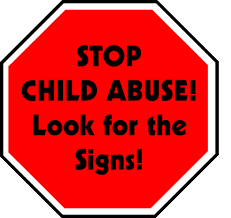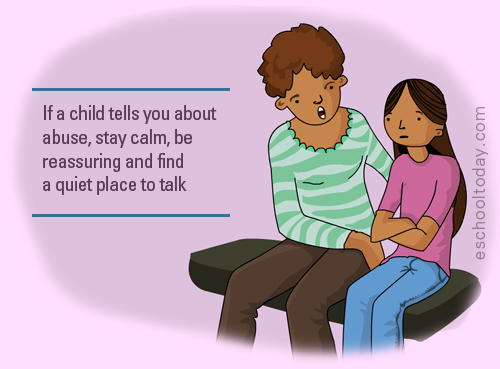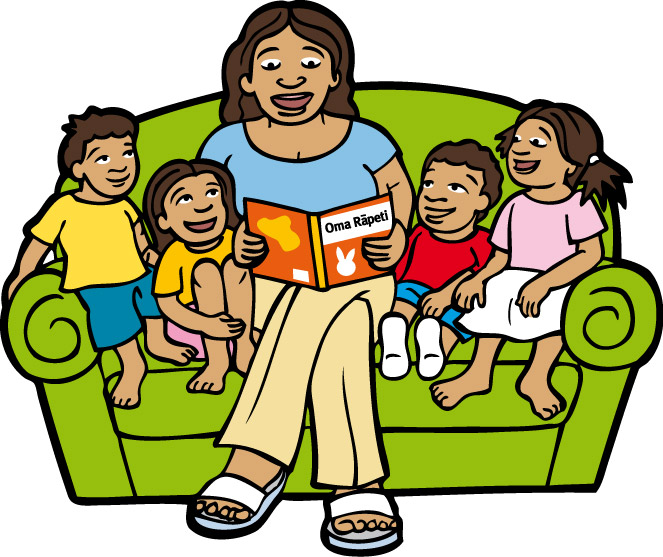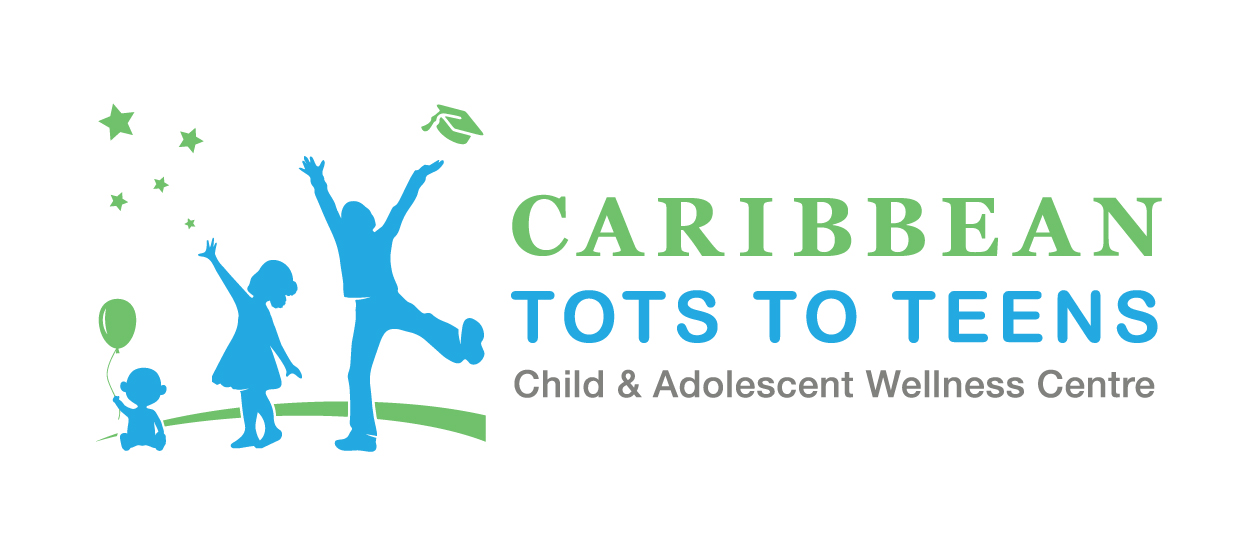Early Intervention: When is a Problem, A Problem?
It can be difficult to figure out if a behaviour that you are noticing (or not noticing!) needs special attention. Is it a phase? Will they grow out of it? Am I worrying too much? 
All our children have their own individual personalities and preferences, strengths and challenges, so how do we know when an issue is concerning enough to seek help?
One way of deciding if a behaviour warrants attention is to check it against others the same age. How do most others in their class or their friend group act or cope? Sometimes, even if the same behaviour exists with peers, it may be more intense or frequent for your child which could be an indicator of trouble. Three year olds may tantrum but having a tantrum every day for an extended time would be concerning. Teenagers are notorious for needing their own space (which is developmentally appropriate) but withdrawing from the family and friends and activities they liked should be a warning sign.
Another check can be with other caregivers who see your child. Teachers and doctors both engage with a wide spectrum of children at the same age as your child and can be a good judge on whether a behaviour is atypical or concerning. Don’t hesitate to ask if others have noticed an issue or if they have the same level of concern.
Always keep in mind that children have differing abilities and needs. Even if something seems atypical compared to others, ask yourself whether the behaviour is affecting your child’s life in some way. Is it having an impact on their school life or their social life? This should be the key factor in deciding if an issue needs to be taken care of.
Identifying a problem is just the first step to finding a solution. The earlier a problem is addressed is usually the better the outcomes and less chance of greater problems down the road. If you think something is off or could be wrong, ask around informally. Get other opinions. Get a formal assessment or speak to a specialist. We can all work together to get the best outcomes for our children.
Written by Dr. Shauna Miller, School Psychologist
Learn MoreFamily Time
With 60 hour work weeks, extra lessons, extra-curricular activities, exams and all the hustle and bustle of life; how can we find time, to spend quality time with our families? Plain and simple; children, from birth to adulthood, need quality time and meaningful attention from their parents. Parents often focus so much on raising a “successful” child that they overlook how spending time interacting with their children will lead to the child’s success. This does not mean rushing from school to extracurricular activity to supervising homework. Interactive time is that spent with both child and parents fully engaged in an activity together.

Image retrieved from https://www.familiesforlife.sg/discover-an-article/Pages/30-Ways-to-Spend-More-Family-Time.aspx
Here are some benefits of family time:
- The child feels important and loved – Feeling loved, valued and supported by one’s family is crucially important for a child’s personal development especially in their formative years.
- The child has an opportunity to model parent’s behavior – Children live what they learn so why not increase the chances of them learning appropriate prosocial behaviours by observing your interactions while engaging in an activity.
- The parent can observe and learn about the child’s strengths and weaknesses in order to better guide them – Is your child a sore loser while playing games? Is he assertive in communication? These questions can be better answered when the child spends time outside of school activities.
- The child has a chance to voice their thoughts and feelings – Often times the main topic of conversation between parents and children is related to school and academics. Engaging in family time allows for discussions about other issues.
- The parents and child develop a stronger bond- Quality time improves relationships, fosters healthy communication and strengthens bonds.
- Both parents and children get a chance to unwind – Life is stressful for children as well believe it or not. Spending time as a family allows for both parents and children to de-stress.

Imagine retrieved from http://www.dailymail.co.uk/femail/article-2328597/Spending-quality-time-family-beats-material-possessions-holidays-new-happiness-poll.html
Here are some suggestions of family time activities:
- Family meal time
- Hobbies such as drawing, art and crafts,
- Games night/Movie night
- Religious activities.
- Shopping with the family
- Visit concerts, movies.
- Outdoor activities such as hiking, walks, bicycling, picnics, or camping.
Written by Jhanille Brooks, Mental Health Counsellor & Rehabilitation Specialist
Learn MoreIdentifying Signs of Abuse In Children
 In recent times there has been increasing reports in the news regarding the amount of abuse occurring against our nation’s children. Abuse does not occur on a singular scale. It consists of three different forms – physical, sexual, and emotional (neglect). Everyone who endures abuse reacts to the traumatic experience differently. As it relates to abuse in children, it may be hard for persons to recognize the signs.
In recent times there has been increasing reports in the news regarding the amount of abuse occurring against our nation’s children. Abuse does not occur on a singular scale. It consists of three different forms – physical, sexual, and emotional (neglect). Everyone who endures abuse reacts to the traumatic experience differently. As it relates to abuse in children, it may be hard for persons to recognize the signs.
It may be difficult for a child to manage their emotions and behaviour after enduring a traumatic experience. Children who endure abuse may experience shame, guilt or confusion. They may experience fear which may cause them to be scared to tell anyone about the abuse, especially if the abuser is a relative or family friend. Based on their apprehension to identify or discuss their abuser, it is helpful to look out for the following warning signs (Mayo Foundation for Medical Education and Research, 2015):
- Changes in behaviour — such as anger, aggression, hostility or hyperactivity
- Withdrawal from friends or typical activities
- Rebellious or defiant behaviour
- A sudden loss of self-confidence or a display of depression, anxiety or unusual fears
- Changes in school performance
- Frequent absences from school
- Reluctance to leave school activities, as if he or she doesn’t want to go home
- An apparent lack of supervision
- Attempts at running away
- Attempts at suicide
Depending on the type of abuse, the signs and symptoms may vary. These however are just warnings and may not solely indicate that the child is being abused. They could be indicators for other conditions. Professional support and assessments may need to be done as a follow up to ascertain and address what exactly is happening with the child.
Let’s explore the three major forms of abuse and how they may present in a child’s behaviour.
Emotional Abuse Signs
- Headaches or stomach aches with no medical cause
- Social withdrawal or a loss of interest or enthusiasm
- Loss of self-confidence or self-esteem
- Depression
- Delayed or inappropriate emotional development
- Desperately seeks affection
- Avoidance of certain situations, such as refusing to go to school or home or taking transportation to go to school or home
- A decrease in school performance or loss of interest in school
- Loss of previously acquired developmental skills
Signs of Neglect
- Poor hygiene
- Eating a lot in one sitting or hiding food for later
- Poor record of school attendance
- Poor growth or weight gain
- Lack of clothing or supplies to meet physical needs
- Taking food or money without permission
- Emotional swings that are inappropriate or out of context to the situation
- Lack of appropriate attention for medical, dental or psychological problems or lack of necessary follow-up care
- Indifference
Physical Abuse Signs
- Unexplained injuries, such as bruises, fractures or burns
- Injuries that do not match the given explanation
- Untreated medical or dental problems
Sexual Abuse Signs
- Blood in the child’s underwear
- Trouble walking or sitting or complaints of genital pain
- Sexual behaviour or knowledge that’s inappropriate for the child’s age
- Pregnancy or a sexually transmitted infection
- Statements that he or she was sexually abused
- Abuse of other children sexually

Photo retrieved from http://www.eschooltoday.com/child-abuse/physical-child-abuse/help-for-physically-abused-kids.html
Reviewing your interactions with your child
As a parent or caregiver here are some questions to ask yourself to encourage awareness of your interactions with your child.
- Do I blame the child for problems that occur or deny that problems exist at home or school?
- Do I show little concern for the child?
- Am I unable to recognize emotional or physical distress in the child?
- Am I constantly blaming or belittling my child and describing him or her with negative terms like “good for nothing”?
- Am I using harsh physical discipline or ask teachers to do so?
- Am I demanding an inappropriate level of academic or physical performance?
- Am I expecting my child to provide me with attention and care or become jealous of other family members getting attention from him or her?
- Am I overtly limiting my child from interacting with others?
Another question to ask is whether the caregiver or parent has a tendency to provide contradicting explanations or no explanation at all for their child’s injuries.
Support
The warning signs mentioned above are provide to help identify the different characteristics of abuse that may occur in children. The child may not be empowered enough to speak out for themselves due to fear or other emotions. It is encouraged that we become advocates for the child. This would entail seeking help and support for the child by reporting it to the specific protective agencies as well as seeking medical and/or psychological services.
Reference:
Mayo Foundation for Medical Education and Research (2015). Diseases and Conditions – Child Abuse.
Written by Lesli-Ann Belnavis, Registered Art Therapist
Learn MoreThe Importance of Reading With Your Child | Kellie-Anne Brown-Campbell

The literature is littered with numerous reports on the fact that parent involvement is a number one factor in predicting early literacy success and later academic achievement. As parents, we often pass off the importance of our roles in the development of our children’s academic skills, especially reading, onto school. Some comments which we may hear are: Why should I read to my child? They do enough of that at school! I am not a teacher! On the contrary, as a parent, you are your child’s NUMBER ONE TEACHER! Children need their parents to act as models through daily reading practice in an effort to successfully navigate through early literacy skills and build on later skills. In this article, I would like to highlight three main reasons why it is important and in fact valuable, to read with and to your children!
- Reading exposes your child to rich language and diverse content. When reading books with your children, they are exposed to a wide vocabulary and more complex and diverse ways of expression, rather than the mundane ways of communication they may experience on a daily basis. Therefore, books allow parents to expand the language environment as they become their children’s first and most important teachers. Parents are therefore able to immerse their children in rich and varied language, sparking interest in information, building imagination and even developing the cornerstones of interest in topics such as science and math. It is therefore a great idea to expose children to not just fictional material, but also non-fictional books.
- Reading with your children helps prepare their minds to succeed in school. The benefits of shared reading know no age limits. Babies are soothed by their parents’ voices; school children reading to parents can show their new accomplishments or seek their parents’ help and books for toddlers can help children get ready to learn to read. Children are used to listening to language for its meaning, but reading demands that they also pay attention to the sounds of language, helping to build phoneme and phonological awareness skills. When reading to your children ask them about rhyming words, homophones, similar syllables, etc. This helps to build a good foundation in language.
- Reading with your child can build family ties and allow for bonding.Reading with your child is most beneficial when parents take it as an opportunity to converse with their children through topics and ideas that come up in the books. Reading together is family time; it is fun time, cuddle time, a time to share your passions, perspective, and your values but also a time to listen. It creates a time for children to express themselves as well as an opportunity for parents to show their willingness to listen. Try it today! Build a conversation around a book and experience the joy of having a conversation with your child!
Written by Kellie-Anne Brown-Campbell, Licensed Associate School Psychologist
Learn MoreBACK TO SCHOOL THE S.M.A.R.T. WAY

- image from http://www.yukonwellness.ca
Back to school is here! I am encouraging kids at all levels to set S.M.A.R.T. Goals for the up-coming academic term! You can get the results you want as long as you keep your mind’s focus on what you want to achieve.Make your academic goals as specific as possible, also make them measurable (determine for yourself how you will know when you’ve achieved EXACTLY what you want!).
Importantly, write down your goal in a way that makes it ‘as if…NOW’. Don’t phrase your goals as an arbitrary wishful thought that may or may not be achieved at some eventual point in the future. Instead, make it real and as if it’s right now. You can do that by filling it with strong visuals, sounds and feelings that make the experience as though it’s happening at this very moment for you!
You do need to make sure that whatever goals you set are realistic and can be achieved in the time frame you set and with the resources you have available to you. Finally, ensure that you anchor whatever goal you make in a timeline with a specific time attached for obtaining your goal. So let’s try out an example of setting a S.M.A.R.T. academic goal:
“It is December 2014 and I have just received my end of term report from the office, I feel amazing because I have obtained an average of 90% on my report. (You may go ahead and put in specific scores for specific subject areas). I can hear my parents’ congratulations about the great job that I have done and I feel satisfied with my performance. This feels amazing!”
When we make S.M.A.R.T goals and position them at a concrete point in our future we give our minds something specific to focus on and because of the strong sensory energies (visuals, sounds, feelings) that we associate with the goal, we unconsciously are mobilised to do things that are guaranteed to get us what we want.
Just remember….where you put your focus changes EVERYTHING! Have an amazing academic year from Caribbean Tots to Teens!
Matthew McKenzie is a Masters level Clinical Psychologist at Caribbean Tots to Teens. He can be reached at mathhew.mckenzie@caribtots2teens.com
Learn MoreLeading by example… “to the world”
Congrats to Miss Kitty! She has shown us that we can be our better self and our healthier self all at the same time. Childhood obesity is a serious issue throughout the Caribbean. It is creating problems for us now, and will continue to challenge the health and productivity sectors for years to come. Families fear starting on the path to “health”, but Miss Kitty has shown us all it is worth the effort.
Sure, she’s not running away from her fluffy ways, she’s as authentic as they come.
People aren’t abandoning her because she’s shedding her fluffiness.[…] she can use her new found shape to inspire more Jamaican women to understand that being ‘fluffy’ shouldn’t be your final comfortable state.
Thanks to Daily Veritas for highlighting the reality of obesity, starting in our children, while giving us a positive message of encouragement. Click on the link below to enjoy the entire article:
Is Miss Kitty still “fluffy to the world”? And why she’s perfect to change the nation…
Learn MoreDying to be Beautiful 2014
Please share this poster.
Please come: Be informed, get involved.
For more information click & go to the conference site.
Learn More
STREAKING IT BLUE!
Yes you can! Whether it’s for the RUN or for the FUN this 2-part fiesta is all for a good cause: raising funds for children throughout the Caribbean who have been diagnosed with cancer. Check out their website, by clicking on the picture. Registration for the run ends this Friday. Please share.
Learn More







